On August 9, 2024, the Ministry of Culture, Sports and Tourism announced that the art of decorating poles of the Kor people in Tra Bong district (Quang Ngai) is a national intangible cultural heritage, belonging to the category of folk knowledge.
Elaborate and long-lasting buffalo-eating ceremony
Captain Ho Van Nam, Deputy Police Chief of Tra Binh Commune (Tra Bong District, Quang Ngai), although young, has a lot of knowledge about the culture and beliefs of the Kor people. Since childhood, Captain Nam has witnessed the buffalo eating ceremony (sacrificing to the gods) of his people. The ceremony is elaborate and long, the main purpose is to thank the gods and ancestors. During the ceremony, the Kor people have to erect a pole.

Kor people's flagpole
PHOTO: P.DUNG
According to Captain Nam, the buffalo eating ceremony takes place around November, December or January, sometimes lasting through February of the lunar calendar, usually after the Kor people's Rice Harvesting Festival. Normally, when there is a "promise" with the gods that if they bless the family and villagers with peace and prosperity, they will offer a buffalo, or if someone in the family is sick or has a "difficult to solve" problem, the Kor people pray and are helped by the gods, ancestors... through the disaster, they will sacrifice a buffalo to express gratitude. The sacrificed buffalo must be a male buffalo. From the time of the prayer, the Kor people take the buffalo home, lock it in a barn, and raise it carefully for 3 years, until the buffalo is fat, with big buttocks, shoulders, and hump... before holding the sacrifice ceremony.
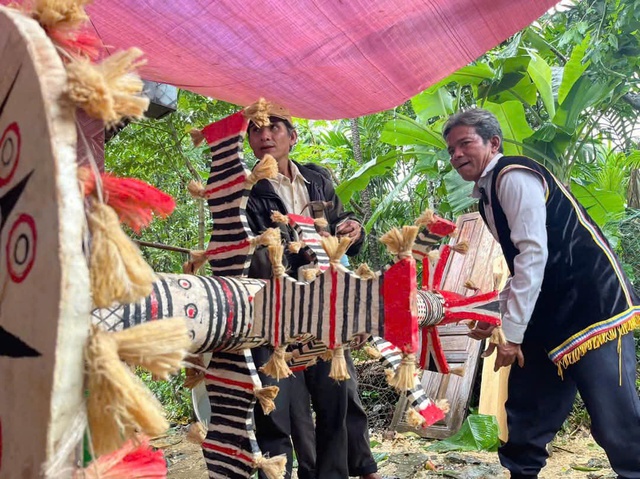
Decorating the flagpole in village 2, Tra Thuy commune, Tra Bong district
PHOTO: H.SINH
As for the pole, for the Kor people, it is a long and laborious process that requires many people. To have a beautiful pole, the Kor people search the forest for a Chinese jujube tree and bring it back to the village. Then, they erect the pole and the trunk, while the pole top is a tall bamboo trunk. According to Captain Nam, the process of preparing the pole lasts a whole month with the contribution of many people. During the buffalo eating ceremony, you cannot erect any pole you want, but must follow the order and wishes of the celebrant. When the celebrant wants to erect the flagpole, they use a bamboo tube filled with water and hit the ground hard. If the water in the bamboo tube splashes towards the rising sun and splashes on people, it means the gods agree. Otherwise, the pole erection must be stopped.
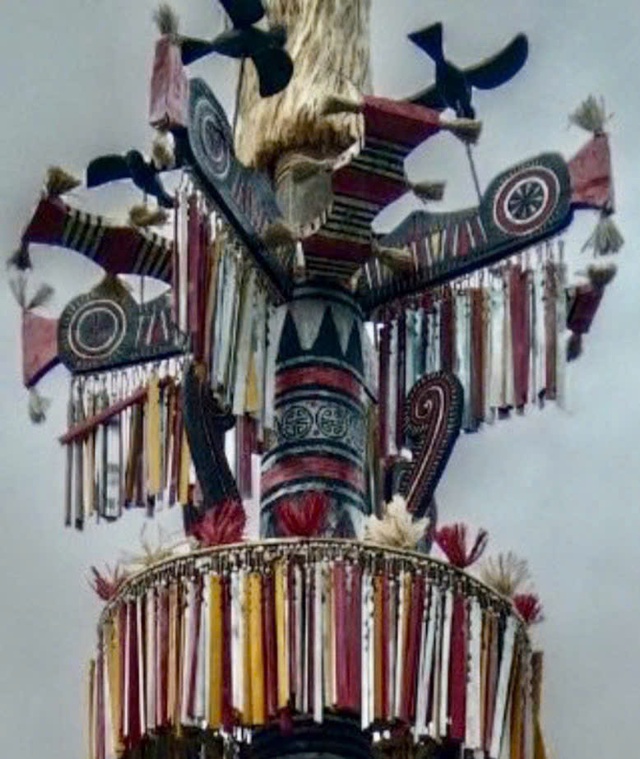
The sacred tray and gubla of the flagpole
PHOTO: P.DUNG
According to the book Traditional Culture of the Kor ethnic group (Cao Chu, Da Nang Publishing House, 2009), there are many types of poles in the buffalo-eating ceremony: Buffalo-eating flagpole (xa glák), upper pole (xa cô); xa coh pole; leaf pole; kja pole; umbrella pole; papaya pole... According to our research, there are families that eat all 3 buffaloes and use flagpoles, but when using leaf poles, it is considered the last buffalo-eating ceremony, meaning to thank the gods and ancestors. The Kor people living on forest roads and waterways in Tra Bong district have different ways of decorating and erecting the pole, each with its own unique features. In addition, during the buffalo-eating process, the homeowner also prepares pigs and dozens of chickens to invite the whole village to join in the fun.
THE ESSENCE OF THE KOR PEOPLE
Among the types of poles used in the buffalo-eating ceremony, the leaf pole is the simplest, the rest are very elaborate in the art of shaping. Finding the wood of the tree, the bark of the tree, the bamboo... although not simple, is not the most elaborate, but the art of shaping the pole is the most elaborate.
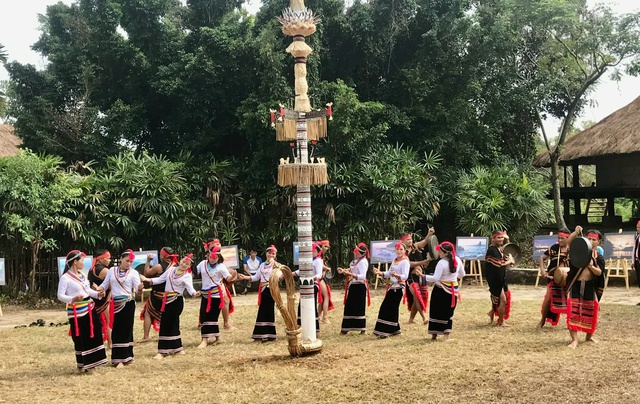
Kor women dancing around the pole
PHOTO: P.DUNG
For example, the flagpole is 13 - 15 m high, including: base, trunk and top. Accordingly, the base is cylindrical, consisting of 2 sections. The section from the ground up above the head of the person is used to tie the neck of the sacrificial buffalo, not decorated or only painted white. The remaining section is decorated with patterns connected into concentric horizontal strips, each strip is about 10 - 12 cm wide. Here, white is used as the background, the diamond-shaped patterns, sawtooth patterns, sun patterns... stand out with black and red colors.
The pole is 2.8 - 3 m long. The lower part of the pole has 7 decorative bands around it, the background is painted white, then a red circle is painted boldly on the dividing line between the bands. In addition, the Kor people also draw 5 - 7 parallel lines around the pole with black and red colors, alternating on a white background. Each pattern band is a different decorative drawing, the Kor people express the visual language associated with the gods in their beliefs, such as: goddess Mo Ca (goddess of human birth), god Pnon (called Coi Pnon, guardian god, husband of goddess Mo Ca) ...
The upper part of the pole (about 1 meter) is decorated with a sacred tray, where the gods who attend the ceremony reside. The Kor people decorate the top of the tray with white and alternating red and white bark flowers; the bottom of the tray is also painted white with circular patterns and sunrays, symbolizing the goddess Mo Ca.
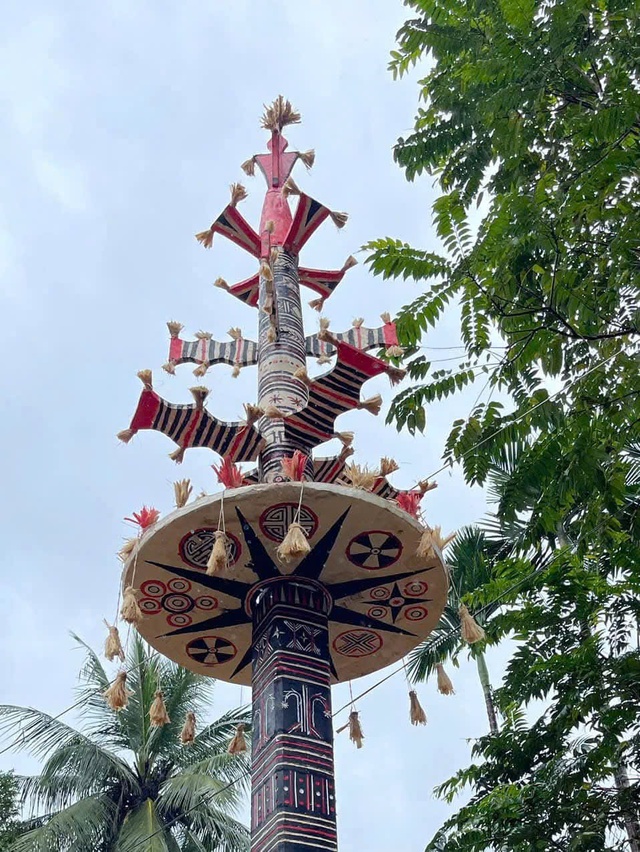
A banana pole (gâk cot kja)
PHOTO: H.SINH
On the altar, the Kor people place a pillar called a gubla. The gu pillar is a column and 4 wooden gu ears, carved into concave curves with raised notches on the upper edge. On the top of the raised notches are attached 4 black swallows (2 small females and 2 males) in a counterclockwise flying position. Above the gubla is a pole made of bamboo covered with ivory-white bark fibers.
The top of the flagpole and the flagpole are also elaborately decorated.
According to Mr. Nguyen Thanh Tung, Chairman of the Tra Bong District Labor Federation, who has worked for decades in the Tra Bong District cultural sector, the buffalo-eating ceremony to offer to the gods is the most quintessential feature of the Kor people, and has a very high sense of community. The Kor people do not have a shaman, so when the homeowner finishes the ceremony, the villagers can come and pray before the ceremony, praying for the gods and ancestors to bless them with a peaceful life, free from illness or disease...
During the 12 days of the buffalo-eating ceremony, the Kor people sing alat to "confide" to the buffalo they sacrifice to the gods; sing ka lu to talk to the gods about the lives of their people, praying for peace and luck in life... Those songs are never repeated throughout the 12 days and nights. When performing the ceremony, the homeowner stands as the master of ceremonies, while his son stands by, in the past even carrying swords and spears, standing solemnly on both sides, listening to the offerings so that he can offer them himself later. Thanks to that, the custom is passed down to the next generation, never to be lost. ( continued )
Source: https://thanhnien.vn/nghe-thuat-trang-tri-cay-neu-cua-nguoi-kor-185250330222506017.htm





![[Photo] Looking back at the impressive moments of the Vietnamese rescue team in Myanmar](https://vstatic.vietnam.vn/vietnam/resource/IMAGE/2025/4/11/5623ca902a934e19b604c718265249d0)

![[Photo] "Beauties" participate in the parade rehearsal at Bien Hoa airport](https://vstatic.vietnam.vn/vietnam/resource/IMAGE/2025/4/11/155502af3384431e918de0e2e585d13a)

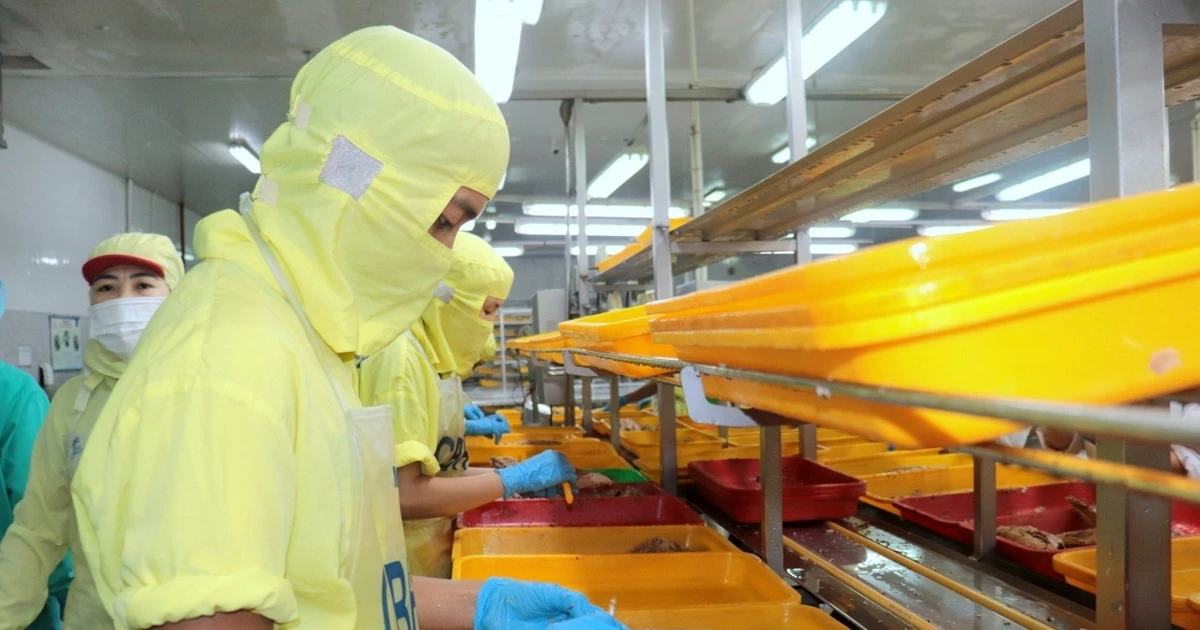

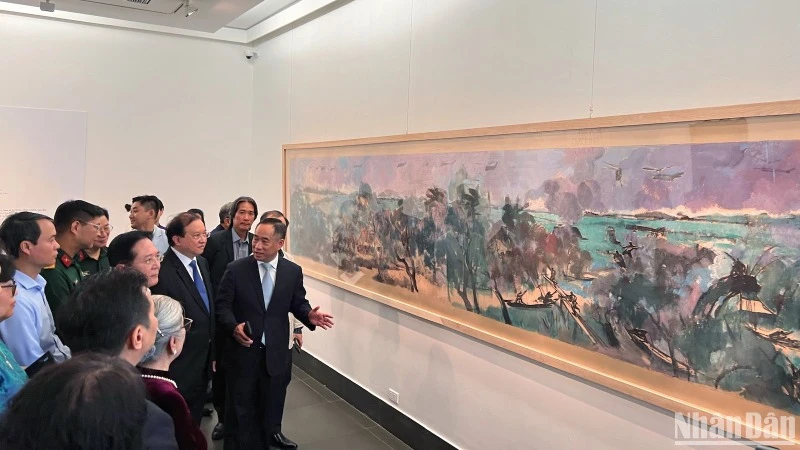











![[Photo] Summary of parade practice in preparation for the April 30th celebration](https://vstatic.vietnam.vn/vietnam/resource/IMAGE/2025/4/11/78cfee0f2cc045b387ff1a4362b5950f)















































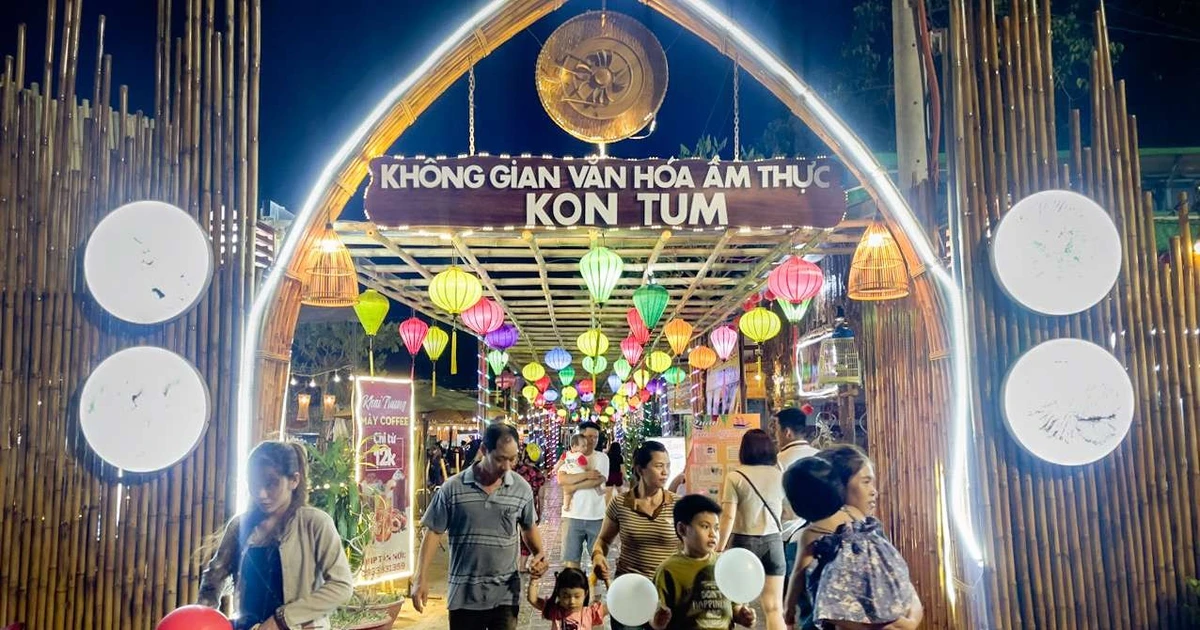














Comment (0)